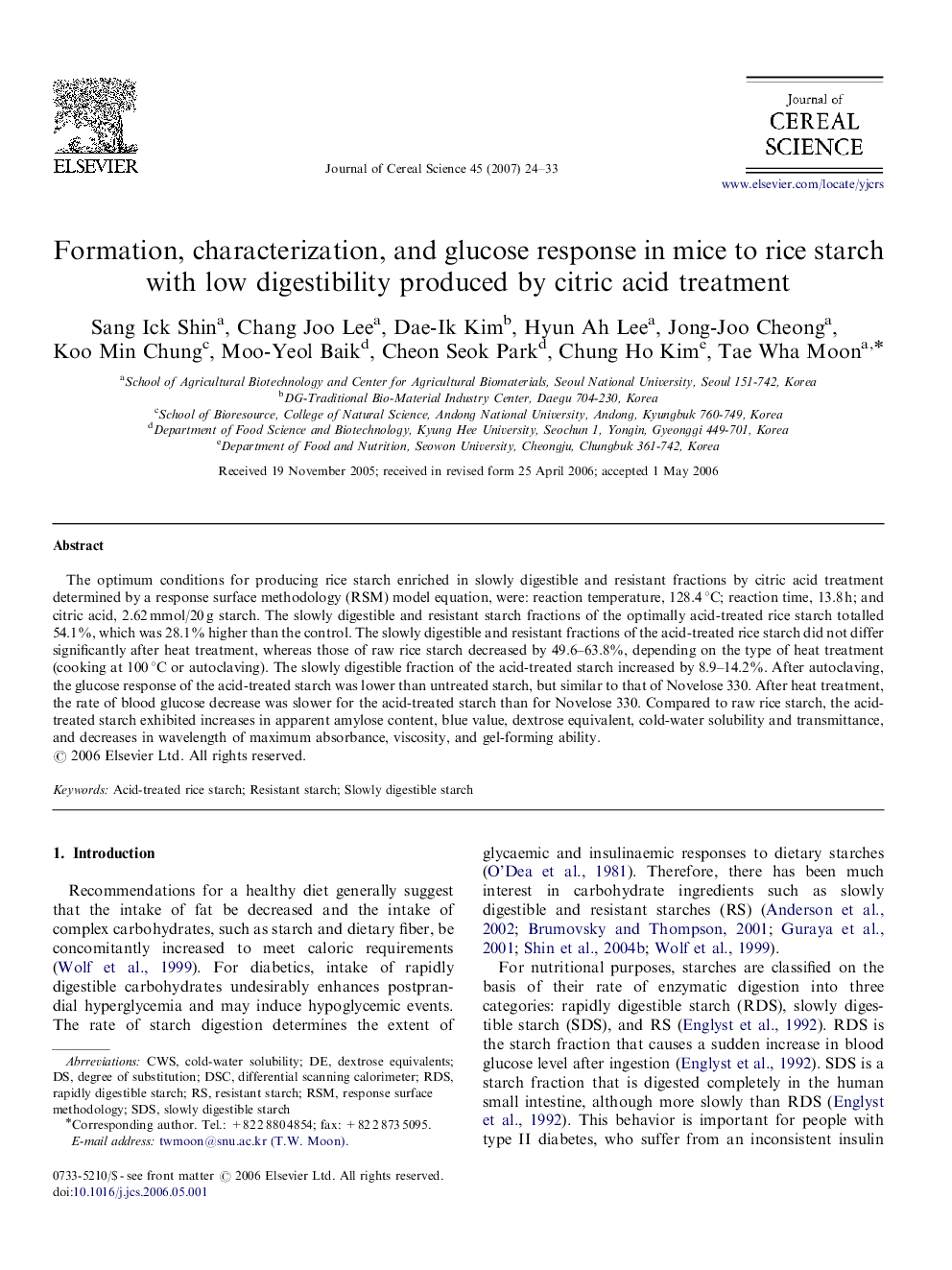| Article ID | Journal | Published Year | Pages | File Type |
|---|---|---|---|---|
| 4516697 | Journal of Cereal Science | 2007 | 10 Pages |
The optimum conditions for producing rice starch enriched in slowly digestible and resistant fractions by citric acid treatment determined by a response surface methodology (RSM) model equation, were: reaction temperature, 128.4 °C; reaction time, 13.8 h; and citric acid, 2.62 mmol/20 g starch. The slowly digestible and resistant starch fractions of the optimally acid-treated rice starch totalled 54.1%, which was 28.1% higher than the control. The slowly digestible and resistant fractions of the acid-treated rice starch did not differ significantly after heat treatment, whereas those of raw rice starch decreased by 49.6–63.8%, depending on the type of heat treatment (cooking at 100 °C or autoclaving). The slowly digestible fraction of the acid-treated starch increased by 8.9–14.2%. After autoclaving, the glucose response of the acid-treated starch was lower than untreated starch, but similar to that of Novelose 330. After heat treatment, the rate of blood glucose decrease was slower for the acid-treated starch than for Novelose 330. Compared to raw rice starch, the acid-treated starch exhibited increases in apparent amylose content, blue value, dextrose equivalent, cold-water solubility and transmittance, and decreases in wavelength of maximum absorbance, viscosity, and gel-forming ability.
